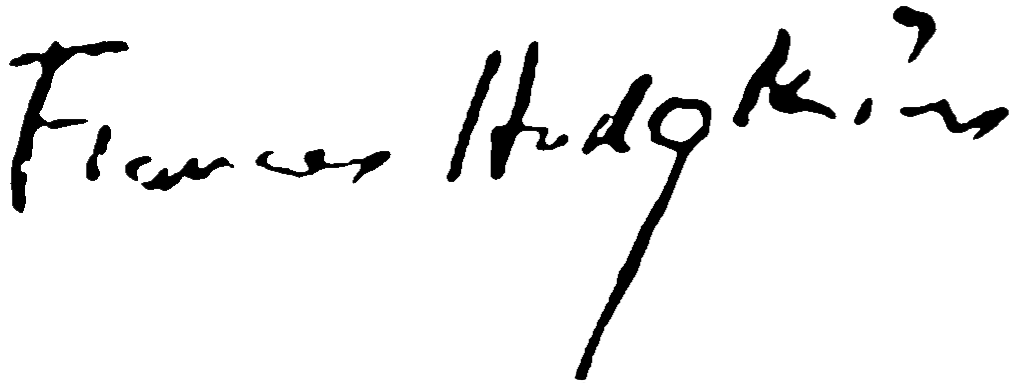-
Frances Hodgkins
Still Life, Arrangement of Jugs c.1937
Watercolour & gouache, 46 x 61 cm
Signed Frances Hodgkins lower right
To Ree Gorer, 23 July 1937. Sea View, Worth Matravers, Dorset.
My fate has fixed me in Worth. I hope you & Geoffrey will come here one day when I get fixed properly. Rather than continue a homeless wanderer I am settling down here in a somewhat negative mood, neither liking nor disliking the place, but thankful to have it & call it home.
Frances Hodgkins spent much of 1936 and 1937 in what Joanne Drayton describes as 'an itinerant whirl'. After taking a studio in Hampstead for a period she travelled to Wales, then moved to Dorset and spent Christmas 1937 in Wiltshire. It was around 1937 that she produced the watercolour Arrangement of Jugs, which can be seen to have its origins in the still life compositions painted earlier that decade. The Green Urn (private collection, New Zealand), and Cut Melons (Museum of New Zealand Te Papa Tongarewa), both c.1931, juxtapose various vessels with fruit, producing unconventional still-life arrangements which merge with the landscape. Hodgkins' use of the jug motif goes back to 1931, at least, as in the oil painting Red Jug in the collection of the Auckland Art Gallery Toi o Tamaki (which also has an undated pencil drawing, Jug). Here the dominating jug is placed in front of a strangely spartan landscape relieved by a single barren tree, the overall effect being somewhat surrealistic and evoking what Drayton identifies as a sense of quiet and unease.
A drawing from around 1937, Arrangement of Jugs (private collection, UK), predates the 1938 lithograph of the same name, and has elements in common with it and a circa 1937 watercolour, Still Life (also private collection, UK). It includes, for example, the staggered pair of modernist glass vases with the watercolour, and the lamp with the lithograph. Obviously experimental, it is more fluid than the two images that followed, and the various elements appear to float freely in space, untethered to a horizontal plane.
Hodgkins' circa 1937 watercolour Arrangement of Jugs can be seen as an extension of her approach to the depiction of colour and form. The individual elements have undergone extreme simplification, and are defined by varying degrees of outlining and bright splashes of colour. There is minimal overlapping of the objects, and their positioning on an undefined surface provides a modest sense of depth to the composition. Despite the title, only one of the seven individual elements is a jug. It is accompanied here by two (yellow) round ceramic vases and a pair of rectangular modernist glass vases, the larger of which contains sprigs of plants. There is an absolute economy of means throughout, with pigment used sparingly to define the objects and, in the case of the two yellow vases, their applied decoration.
_
Written by Richard Wolfe
Research by Jonathan Gooderham
Provenance
Gillian Jason Gallery, London.
Literature
Richard Wolfe and Jonathan Gooderham, Frances Hodgkins: A Singular Artist (Jonathan Grant Gallery) p. 13-14
Reference
Frances Hodgkins Database FH1282
(completefranceshodgkins.com)
Exhibited
London, U.K. Gillian Jason Gallery, A Tribute to Frances Hodgkins. November - December 1987
Auckland, N.Z. Jonathan Grant Gallery, Frances Hodgkins: A Singular Artist. July 2016
Illustrated
Richard Wolfe and Jonathan Gooderham, Frances Hodgkins: A Singular Artist (Jonathan Grant Gallery) p. 14
